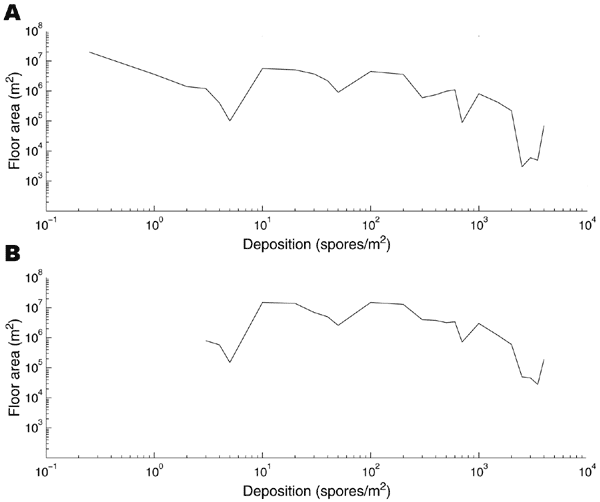Volume 11, Number 1—January 2005
Research
HEPA/Vaccine Plan for Indoor Anthrax Remediation
Figure 3

Figure 3. . . The amount of indoor floor area in lower Manhattan (vertical axes) that is contaminated at various anthrax concentration levels (horizontal axes) as a result of an outdoor release of 1.5 kg of anthrax spores. Plot A, an average of 92 scenarios (9 release locations in Manhattan times 8 wind directions, plus 20 release locations on the outskirts of Manhattan). Plot B, provides similar information for the scenario that generated the largest total area of contamination.
Page created: April 25, 2012
Page updated: April 25, 2012
Page reviewed: April 25, 2012
The conclusions, findings, and opinions expressed by authors contributing to this journal do not necessarily reflect the official position of the U.S. Department of Health and Human Services, the Public Health Service, the Centers for Disease Control and Prevention, or the authors' affiliated institutions. Use of trade names is for identification only and does not imply endorsement by any of the groups named above.